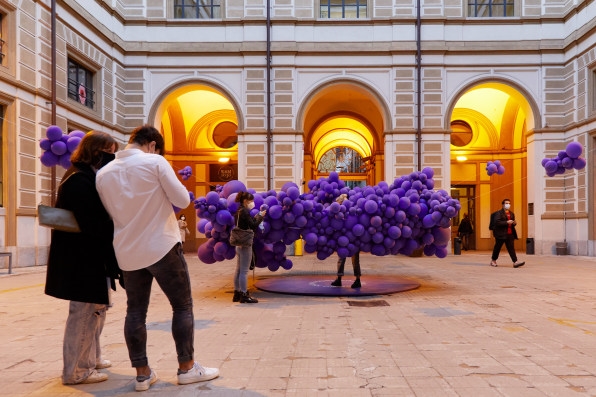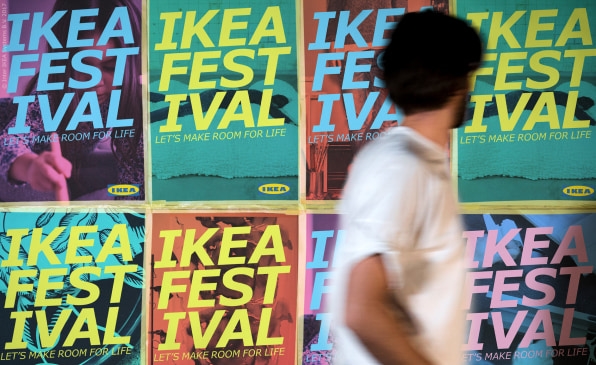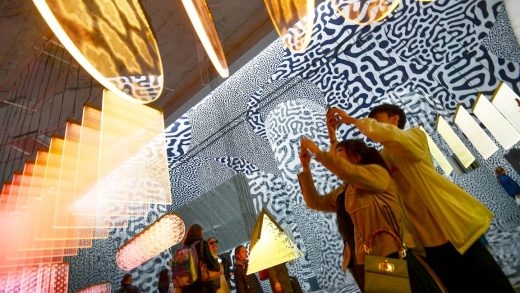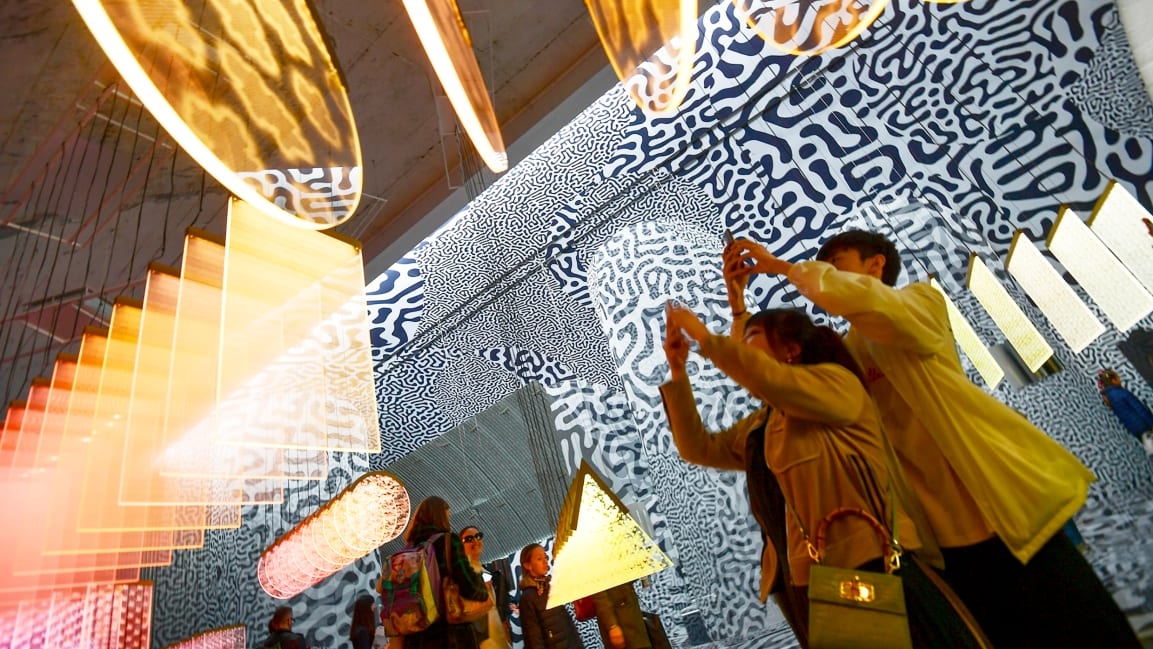Not another Instagram installation: How the design industry can set a new standard for IRL experiences
As the Lombardy region of Italy reentered its strictest level of lockdown earlier this month, rumors swirled that Milan’s Salone del Mobile would be cancelled again. Prior to the pandemic, the fair—and the enormous Milan Design Week that surrounds it—had been the annual lynchpin event for companies in the furniture and design industry, as well as a global stage for experimentation and storytelling for brands including Airbnb, Nike, Lexus, and Louis Vuitton.
As this design event and countless others around the world head into a second year of disruption, it begs the question of whether we in the design industry have an opportunity to reimagine not only the purpose of these design weeks, but also their execution.
Traditionally, seminal design events like the London Design Festival, NYCxDesign, and Milan’s Salone del Mobile were anchored around a furniture industry trade fair, which meant that most attendees were directly connected to the design industry in some way. But in recent years, design moved from a niche sector into a mainstream conversation. It became a coveted area for business innovation across categories, which resulted in a significant shift away from the trade events featuring home goods to the larger public-facing festivals of creativity that surround them. This isn’t entirely a bad thing. It’s inspired more engagement, incentivized cities and businesses to be more involved, and created new audiences that are excited about the events. But as interest and investment grew, so did a more exclusionary, commodified design ethos that attracted more of the design-interested wealthy that one would expect to see at an art fair, rather than the socially focussed, democratic problem solvers that are foundational to the industry.

Translating the accessibility of virtual events
The virtual model that many of these events pivoted to during the pandemic would appear to have brought design back to its more accessible and egalitarian roots by allowing, for the most part, anyone, anywhere to access this content. One stellar example of this is the Vitra Sessions, which delves into pressing questions that have emerged since the pandemic. Even so, the virtual shift came at the cost of personal interactions and spontaneous discovery that can only be made on the ground at these events (especially around 2 a.m. at Bar Basso in Milan, as industry insiders will tell you).
Here, there is an opportunity, coming out of lockdown, for these events to maintain the spirit of accessibility, foster those spontaneous interactions and encourage thoughtful dialogue, while also supporting local economic recovery by finding new ways to integrate into the public realm. Ben Evans, director of the London Design Festival, has been working closely with the mayor of London on how the September 2021 event can encourage the public to reengage safely, venture out, and be inspired while supporting local businesses. “The London Design Festival is not just a platform for this huge portfolio of design stories, but to actually help generate and encourage the general public to come hear those stories, to reinvigorate the city after an extended period of lockdown,” he says.
In their next edition, city-wide design festivals have the opportunity to call on their local creative community to bring forth ideas for recovery, for healing, and for engagement. The public format allows for greater depth of content that can respond to social issues—both local and global—and cultural change.
Responding to social and cultural change
In returning to in-person design weeks, it will be interesting to see brands shift their marketing budgets from handsomely funded physical installations and collaborations with ‘star’ designers, to supporting the wider creative ecosystem which, like many others, has been hit especially hard during the pandemic. With a little ingenuity and research, there is an opportunity to rebalance some of these losses and support under-represented designers whose narrative and insight will be culturally more connective than yet another Philippe Starck designed product.

A few years back, at a time when Ikea’s innovation lab, SPACE10, was exploring shelter for refugees, the company instead presented a living room that featured “a festival of music, design, live acts” in Milan. It was, in my humble opinion, completely uninspiring, if not a huge waste of money. I believe they would have had much more engagement and longevity, not to mention gravitas, from an exhibition on their explorations in movable and temporary shelters—and in turn, more ROI on the marketing spend.
As an industry that consists of some of the world’s most innovative thinkers, design events should be leading the conversation on social change. In its essence, design considers the human experience first—and so should these events. One curator that brands can look to for inspiration is Joseph Grima, who created the incredible Alcova experience during Milan Design Week, featuring lesser-known designers tackling themes like sustainable materials strategies and collective therapy.
Another example is the Dutch design movement Social Label, which has created a blueprint for using design to expand socioeconomic opportunities for people who have had problems entering the job market because of convictions or disabilities. Working with designers, they create products that allow previously disadvantaged people to learn a new trade and produce a beautiful, in-demand product. Personally, at the next Salone del Mobile, I’d rather see a collaboration between one of the world’s leading brands and a social initiative or design exploration like the above, rather than yet another installation designed for Instagram.
Redesigning brand installations with purpose and sustainability in mind
The furniture industry has a huge sustainability problem before even getting to the trade events, with interior design makeovers playing a part in the fact that the building industry contributes to 40% of the worldwide carbon emissions. At these large-scale exhibitions, companies build stands or experiential installations that can be larger than a home, but are discarded as trash at the end of the event. Clearly, this lack of long-term thinking isn’t sustainable. The pandemic has offered the opportunity for the design community to take a step back and think about how we can design experiences that can be repurposed or leave no trace.
From the trade fair side, the International Contemporary Furniture Fair (ICFF) in New York is leading the conversation on how trade shows can provide more sustainable solutions for exhibitors. In order to reduce material waste as well as shipping and building costs, they are providing better designed systems onsite that are as aesthetic as gallery walls, but completely reusable. According to ICFF Show Director Phil Robinson, they have been exploring new materials for carpets that are both durable and recyclable, as well as working closely with the Javits Center to rethink the circularity of all waste produced by the events.
The design industry should be leading the charge on designing for a better world, and that starts with where, how, and why we gather as an industry. A brand can present a concept, experience or launch a new product that addresses social issues and enthralls the public while still delivering an effective and successful marketing campaign. We now have a window of opportunity to rethink every aspect of the design weeks—from installations to interactions. Let’s take advantage of it.
Amanda Kasper is the founder of Alpha Kilo, a creative agency with clients including Harry’s, WGSN, Triennale Milano, Poltrona Frau, and Savile Row. She has been an advisor to C-suite executives such as Airbnb cofounder Joe Gebbia and Huntsman owner and GLG Partners cofounder Pierre Lagrange. A graduate of Denison University, Amanda splits her time between London and Los Angeles.
(48)



